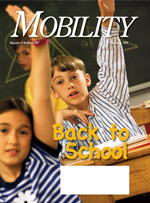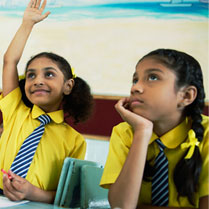.
This American family sent their daughter to a local school in India… hear more about their experiences, including some very funny stories!
See a previous post on the same family.
.
This American family sent their daughter to a local school in India… hear more about their experiences, including some very funny stories!
See a previous post on the same family.
For the next several weeks, we’ll look at report cards from around the world.
 ~ A Spot of Tea ~
~ A Spot of Tea ~.
 You may be familiar with the Staffordshire Bull Terrier, but do you know where they were originally bred? Staffordshire, a county in the West Midlands region of England, has a little over a million residents living in 2 cities and about 6 towns. Known for its porcelain and cathedrals (and a rock formation called The Roaches), Staffordshire has its fair share of tourists. In terms of education, the county has a handful of independent schools and two major universities Keele University and Staffordshire University.
You may be familiar with the Staffordshire Bull Terrier, but do you know where they were originally bred? Staffordshire, a county in the West Midlands region of England, has a little over a million residents living in 2 cities and about 6 towns. Known for its porcelain and cathedrals (and a rock formation called The Roaches), Staffordshire has its fair share of tourists. In terms of education, the county has a handful of independent schools and two major universities Keele University and Staffordshire University.
.
Report Card Basics
Here’s the report card! The blue numbers highlight a few interesting aspects of the report and the numbers correspond to notes below the image.
1. 14 Years Old in… Year 3
The top of this report card reads. “Third Year Progress Card,” which would indicate elementary school to an American. However, in England, the Year 3 can mean the third year of secondary school, which is 8th Grade in the U.S.
2. A Letters & Numbers Report Card
Unlike some 7 to 11 page report cards we’ve seen so far, this report card consists of just 1 page of (mostly) letters and numbers. While the card contains much less comment space than the Australian report cards, the grading system is much more flexible than India’s card of exam scores. The focus of this report is student’s measurable performance and effort.
Unlike the U.S., the British system does not have a grade point average (GPA) system, which correlates to the letter grade. The letter system in this report card seems more flexible (and some would argue more subjective) than a number based on 100, for instance an 88 percent (which is a B+ in the U.S.). Not that American students have anything to complain about; British students will sit for Board Exams, which can be very competitive and strictly scored. Note that the effort grade—based on a 5-point system—receives as much space and importance as the performance grade.
 4. I’m Giving You an A… I mean a B… How about an A/B?
4. I’m Giving You an A… I mean a B… How about an A/B?
Another example of the flexibility of this reporting system is the use of an A/B. In many American schools (especially where the grading system is computerized, and every box needs to be filled.
5. Classes ~ E, H, G, F, RE… Take A Guess!
On this report card, the course names are abbreviated to a letter or two… so the students better know what classes they are taking, so they can tell their parents. Here’s my best guess as to what all the abbreviations stand for:
E – English
H – History
G – Geography
F – Foreign Language
RE – Religious Education
M – Math
P – Physics
C – Chemistry
B – Biology
We’ll see how close I got… UPDATE ~ All the classes are correct!
See Report Card from: Zomba, Malawi; Sydney, Australia, week 1; Sydney, Australia, week 2; Dalhousie, India; Kathmandu, Nepal; Soro, Denmark
Report card analysis to look forward to: Palestine, Canada, Mexico and more!

Lucy Mellors and Liz Perelstein published
“Searching for Schools in a New Country: Meeting Children’s Special Needs”
in MOBILITY Magazine, September 2009.
Family concerns remain the most overwhelming reason for assignment refusal or failure, and this challenge is heightened when addressing a child with special needs. A well thought-out process and high standards can be the difference between success and disaster when moving special-needs children. Lucy and Liz outline 13 comprehensive steps, as well as an explanation of how to accomplish each step. The process includes:
This article is the perfect guide for any parent facing the challenges of an assignment of repatriation.
The entire article can be found here.
I recently interviewed an American family about their experiences while living in India and sending a child to a local school. They told me a fascinating story (I’ve taken a few creative liberties, but the issues are the same).
 Mom and Dad attended the parent-teacher meetings at an English-medium, independent school in India. They spoke briefly to each teacher: the “maths” teacher, the science teacher, the Hindi teacher and finally the English teacher. The English teacher said, “You’re daughter is lovely, but her accent is so thick that no one understands her. Also, she speaks too fast.” Well, Dad was perplexed, “Accent? What accent?”
Mom and Dad attended the parent-teacher meetings at an English-medium, independent school in India. They spoke briefly to each teacher: the “maths” teacher, the science teacher, the Hindi teacher and finally the English teacher. The English teacher said, “You’re daughter is lovely, but her accent is so thick that no one understands her. Also, she speaks too fast.” Well, Dad was perplexed, “Accent? What accent?”
Then the teacher went on to talk about writing. She said, “Your child’s handwriting is very messy and I always have to take points off.” Mom and Dad were not too concerned about handwriting and asked instead about the content of her writing, but the teacher continued to speak about handwriting. “Your daughter must use a computer at home?”
“Well… yes,” Mom replied.
“Does everyone have a computer in the United States? In India, children do not have computers, so handwriting is very important.”
Not sure what to say, mom replied, “But what about the subject matter of her writing?”
The teacher continued, “You see, in India, handwriting is very important because we are preparing our children for The Boards*, and their handwriting must be legible in order to be graded.”
“But she won’t be taking The Boards.”
“She won’t?”
“She will be moving back to the United States.”
The parents ended the story with a laugh, “well, she had much better handwriting when she returned to the United States!”
In a way, the tale is funny, but it’s also telling of educational values. While the parents were trying to find out about the content of their child’s writing, which usually constitutes the most important aspect of writing in the American educational system, the teacher showed much more concern for her handwriting, crucial for passing exams that can open or close doors to higher education in India. The parents and teacher reached an impasse.
This anecdote illustrates important cultural differences in education, that can make an international education challenging. While the value may be a relatively small matter (who spends much time thinking about handwriting in the United States?), it can have serious implications (computers per capita definitely marks wealth disparity on a national level) and serious consequences (failing the all-important exams). These are the small factors parents might not even think to consider when choosing to send a child to a local school.
That being said, this particular child had an overwhelmingly positive, life-changing experience. School Choice International will post a video of the interview soon… tune in to find out more about this fantastic family.
See a video interview on the same family!
Report Cards from Around the World: Kathmandu, Nepal
October 9, 2009For the next several weeks, we’ll look at report cards from around the world.
~Fasten Your Seat Belts~
~Second Stop ~ Kathmandu~
.
.
.
Pupil Progress Report Basics
Here’s the report card! The blue circles highlight a few interesting aspects of the report and the numbers correspond to notes below the image.
1. Population and Environment
Some schools offer Population and Environment, a class that may be equivalent to Human Geography (offered as an Advanced Placement class in the American system).
2. Percentage and Position in Class
This student received 70s in her classes (which would be a C average in the United States), however this is considered “Very Good to Excellent” in the Nepali education system. Her high achievement becomes evident in her position in class: 2nd, 3rd or 4th out of 19 students. Speaking of which, the class rank would rarely be reported in most American classrooms, except for the valedictorian at graduation. This illustrates differing values in competition within the educational system.
3. Division
In the Nepali system, students are separated into three divisions, a sort of “streaming.” Here’s a break down of the divisions:
4. Teacher’s Comments… “Try harder and do better”
Unlike the report card from Dalhousie, the Nepali progress report includes teacher’s comments (which covers about 50% of the card). The general theme, even for one of the highest achieving students, seems to be “to do better,” “prove her worth,” and “aspire higher.”
5. “She should shed her over confidence”
This statement clearly demonstrates a cultural difference in the value of confidence versus, perhaps, humility? Has your teacher ever said you were over confident?
See Report Card from Dalhousie, India; Soro, Denmark
Report card analysis to look forward to: Malawi, Australia, Canada, Mexico and more!